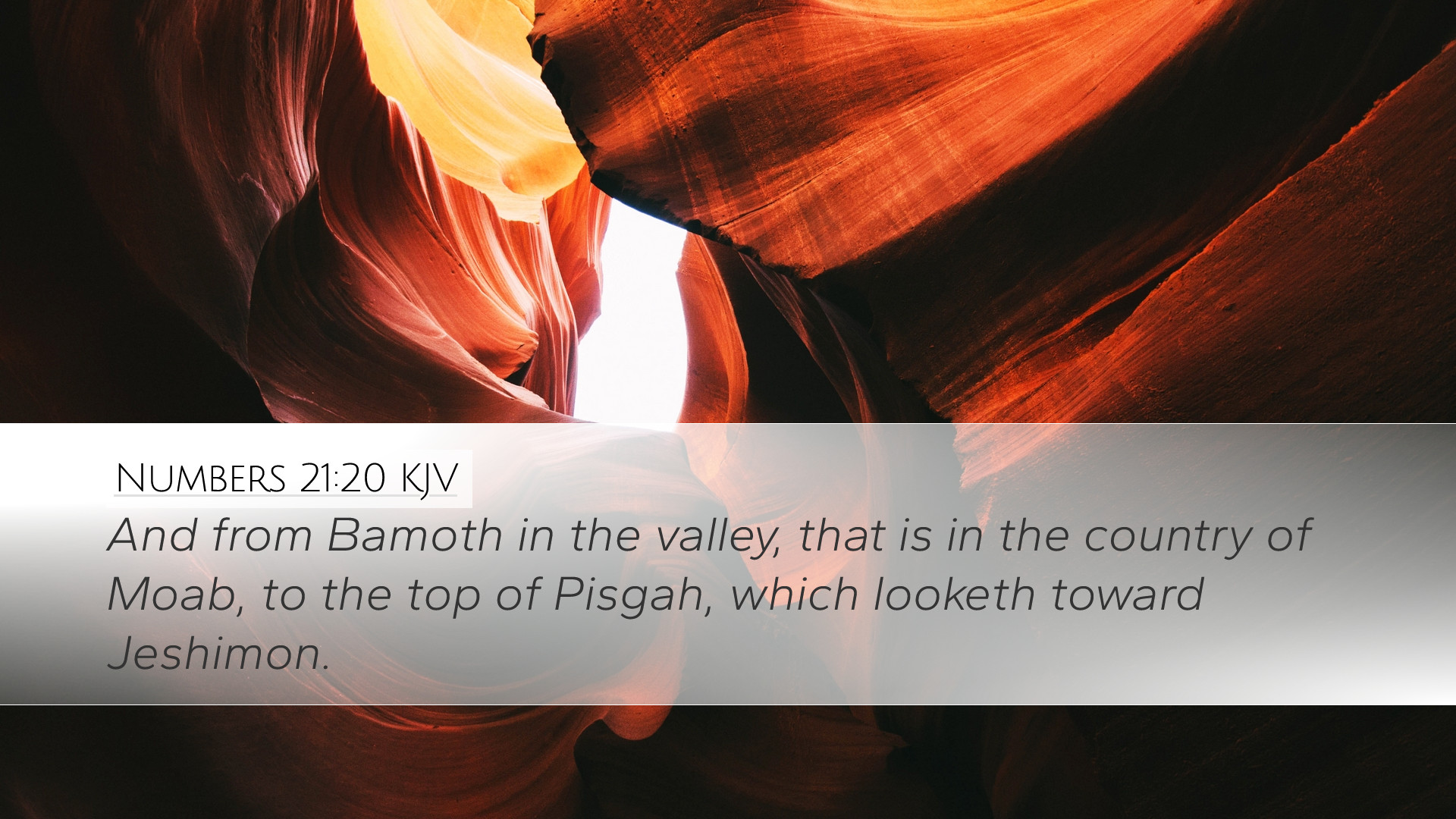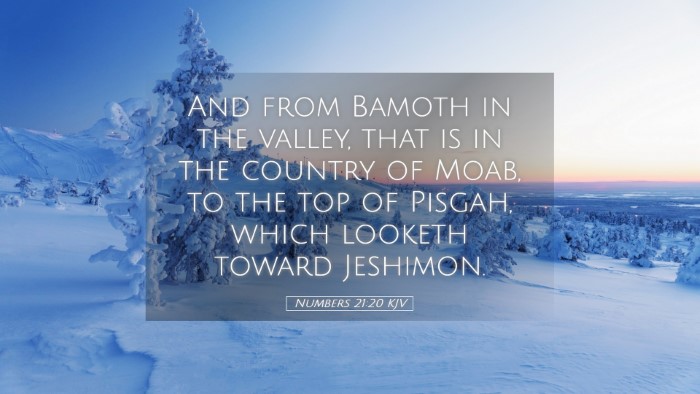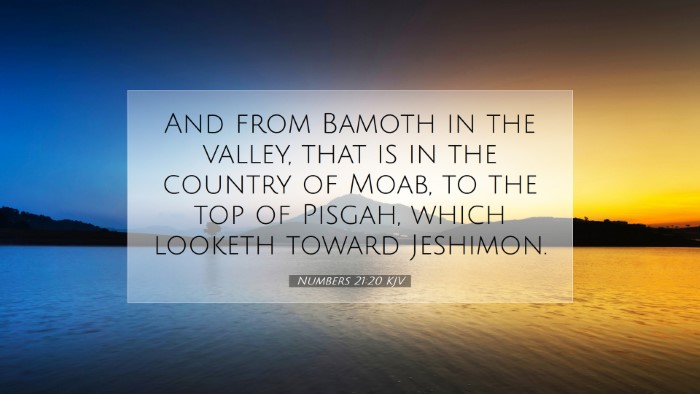Commentary on Numbers 21:20
Verse Context: Numbers 21:20 reads:
"And from Bamoth, in the valley that is in the country of Moab, to the top of Pisgah, which looketh toward Jesshimon."
This verse is situated within a broader narrative concerning the Israelites' journey through the wilderness as they seek the Promised Land. The geographical references, particularly Bamoth and Pisgah, are integral to understanding the historical and theological implications of Israel's journey.
Geographical Significance
The locations mentioned in this verse hold both geographical and symbolic importance.
-
Bamoth: This location is often associated with high places, signifying elevation in both a literal and spiritual sense. According to Matthew Henry, it illustrates the idea of spiritual heights that the Israelites are striving to reach.
-
Pisgah: Known for its panoramic views of the Promised Land, Pisgah symbolizes hope and anticipation. Albert Barnes notes that the summit of Pisgah was significant for Moses, as it represented the culmination of his leadership and the view of the land he would not enter.
-
Jesshimon: This place is often interpreted as a point of reflection—a place looking out over the wilderness and towards the yet-unfulfilled promise of the land flowing with milk and honey. Adam Clarke draws attention to how this viewpoint serves as a metaphor for faith in God's promises, even when they are not immediately visible.
Theological Insights
Numbers 21:20 points to broader theological themes regarding God's guidance, leadership, and the promise of the land.
-
God's Guidance: Throughout their journey, the Israelites followed God's guidance. The mention of specific locations signifies that their path was not arbitrary but divinely directed. Matthew Henry emphasizes that believers should trust in God’s guidance in their spiritual journeys as the Israelites did in their physical journey.
-
Leadership of Moses: Moses, as the leader, shares a deep connection with the places mentioned. His view from Pisgah foreshadows his legacy and the struggles he faced. Albert Barnes points out that Moses' inability to enter the Promised Land teaches humility and the importance of being a faithful servant of God, regardless of personal outcomes.
-
Faith and Promises: Standing on the high places, looking towards Jesshimon, epitomizes faith['s] anticipation. This emotional and spiritual stance symbolizes the tension between present struggles and the hope of future fulfillment. Adam Clarke discusses how believers today can learn from Israel’s journey to maintain faith in God's promises despite obstacles.
Lessons for Pastors and Theologians
This verse serves as a poignant reminder for spiritual leaders and scholars on several fronts:
-
Leading with Vision: Just as Moses was shown the landscape of promise, leaders today must have a vision grounded in faith and informed by God’s Word. The ability to see beyond current hardships into God’s promises is vital for effective ministry.
-
Encouraging Others: In their own endeavors, pastors can foster environments where congregants feel uplifted and able to look at their 'Pisgah'—their future promises. Matthew Henry posits that such encouragement can empower God's people to press forward, much like the Israelites did.
-
Maintaining Faith Amidst Trials: This passage teaches the importance of holding steadfast to hope, even when circumstances seem bleak. Scholars and theologians can draw parallels with New Testament themes where faith and perseverance are emphasized even in trials, echoing the sentiments of Albert Barnes concerning Israel's perseverance.
-
Reflection on Spiritual Journeys: Just as the Israelites camped at significant locations for reflection, modern practitioners should prioritize moments of spiritual reflection. Adam Clarke encourages individuals to seek their own Pisgahs in their spiritual journey — places of clarity and vision where they can assess their faith journey against God’s goodness.
Conclusion
Numbers 21:20 is not merely a geographical note; it encapsulates profound theological principles around guidance, leadership, and faith. For pastors, students, theologians, and scholars, this verse invites deep introspection and encourages a faith-filled perspective in their journey. The call to persevere and look towards God's promises serves as a timeless message for all generations of believers.


